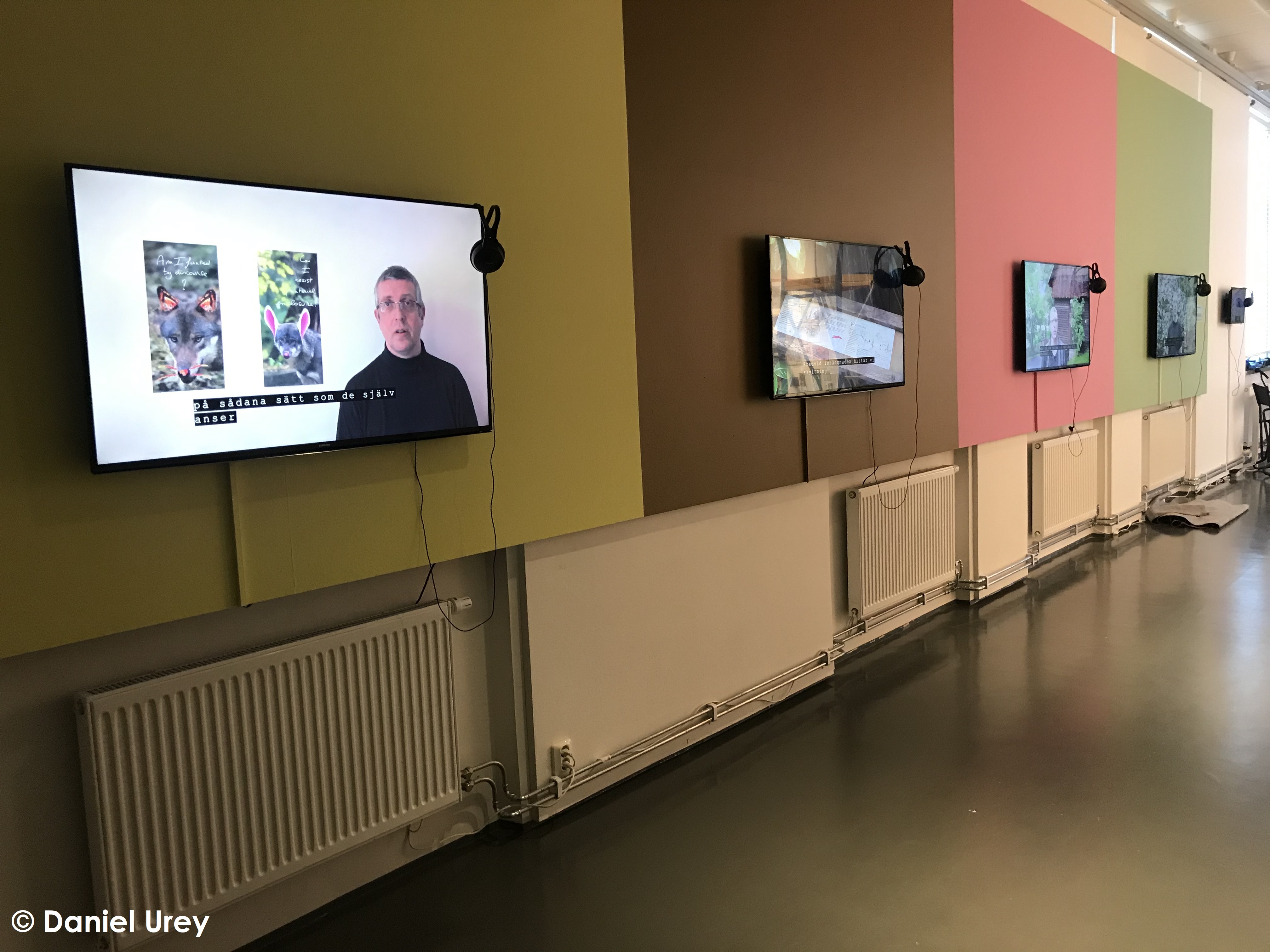Lyssna! exhibition in Skellefteå

Silencing / Unsilencing Nature: A series of video essays is moving to Skellefteå
Originally, the video essays of the Silencing/Unsilencing Nature project, authored by Nico Carpentier, were included in the Lyssna! exhibition at the Swedish contemporary arts centre Färgfabriken. This first exhibition ran from 12 September to 29 November 2020.
Currently, the Lyssna! exhibition has moved to Skellefteå in Northern Sweden. Four Silencing/Unsilencing Nature video essays will be displayed at the Nordanå centre, at Skellefteå Konsthall (Skellefteå Art Gallery) from 13 March to 30 May 2021.
The Lyssna! Project investigates how we emotionally experience and communicate climate change. Färgfabriken, Virserums art gallery and Skellefteå art gallery created with the Lyssna! project a forum where young people, researchers and artists can collaborate to explore the relationships between climate change, knowledge and emotion, also allowing for radical revaluations of the self-claimed centrality of humanity. The four Silencing/Unsilencing Nature video essays unpack the discursive-material relationship between human and nature and reflect on how nature often has been silenced. At the same time, they investigate how nature can be given a voice and become unsilenced again.
They have been produced by Nico Carpentier (who is based at the Institute of Communication Studies and Journalism (ICSJ) at Charles University in Prague), in collaboration with Färgfabriken, within the framework of the MISTRA Environmental Communication (MISTRA-EC) Research Programme.
Links:
- Information about the Nordanå Centre (in Swedish)
- Information about the Lyssna‘ exhibition at website of the municipality of Skellefteå (in Swedish)
- Information about the Färgfabriken (both in Swedish and English)
- Information about the MISTRA EC at institute of Communication studies and Journalism at Charles University (In English)
- Information about the Swedish University of Agricultural Sciences (SLU) in Uppsala, Sweden where MISTRA EC programme is hosted (in English)
- The websites of Nico Carpentier, the Extraordinary Professor at Charles University in Prague (in English)
- The websites of the Institute of Communication Studies and Journalism (in English)
Background note about the Silencing/Unsilencing Nature project
Silencing / Unsilencing Nature: A series of video essays
Nico Carpentier
Silencing / Unsilencing Nature unpacks the discursive-material relationship between humans and nature, and reflects on how nature often has been silenced. At the same time, it investigates how nature can be given a voice and become unsilenced again. The video essays explain how human control is exercised over nature, partially through discourses—structured ways of thinking about the world, ourselves and others—and partially through human’s ability to manipulate the material world. But our discourses are not perfectly stable and all-encompassing; they are object of political struggles and thus contain many contingencies, contradictions and gaps. Moreover, the material world has its own agency, and is not perfectly malleable by humans. It resists our manipulations. These gaps and resistances also open up opportunities to rethink our dominant ways of dealing with nature, and allow us to develop discursive-material practices that take nature seriously, and empathically speak from nature’s perspective. One example, developed in the video essays, is the position of the wolf in the zoo assemblage, how these animals are discursively and materially entrapped, and how their voices can be made audible and gain more strength.
These video essays are part of an educational package, inviting the participating youngsters to unsilence nature. The essays have been developed through a collaboration between Färgfabriken and the Institute of Communication Studies and Journalism (ICSJ) at Charles University in Prague, within the framework of the MISTRA Environmental Communication (MEC) Research Programme. The MEC Research Programme is a four-year research project, based in Sweden, coordinated by the Swedish University of Agricultural Sciences and implemented by an international consortium. The MEC Research Programme aims to reframe Swedish environmental communication so it can effectively underpin and foster sustainability transformations. It is grounded in a transdisciplinary approach that articulates different centres of knowledge production, some of which are based in academia and in the arts.